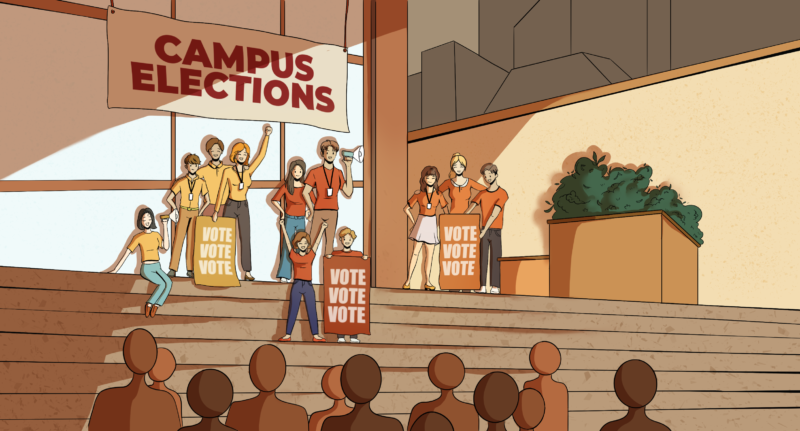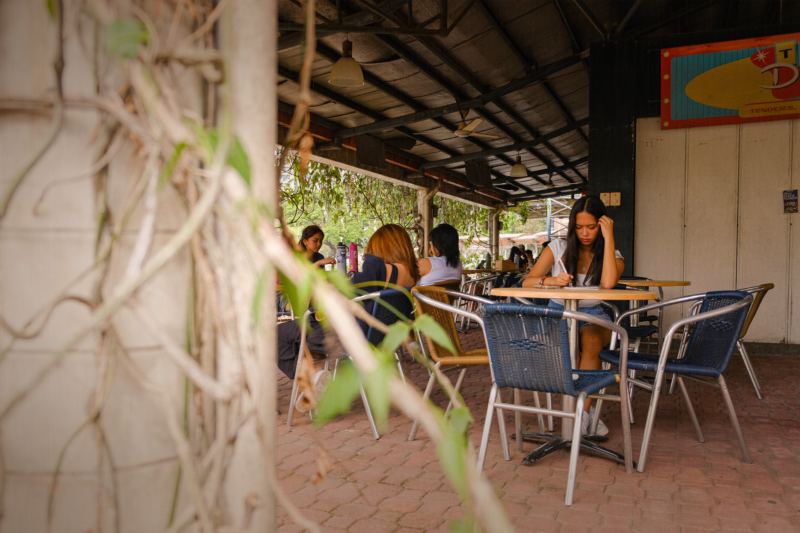As one facet to a university’s branding and reputation, academic rankings and recognition undoubtedly shape the opinions of potential students, teachers, and stakeholders. UK-based higher education marketing company Quacquerelli Symonds (QS) has recently placed Ateneo de Manila University at the 551-600 range in its 2018 World University Rankings. A rather significant slip from 2017’s 501-550 rank, the present ranking coincides with the university’s absence in the latest Times Higher Education (THE) World University Ranking, an annual list of the world’s best educational institutions. Meanwhile, De La Salle University made its debut on the list this year, which, alongside the University of the Philippines, were the only Philippine universities that gained recognition.
However, these rankings have raised questions among the academe and policy-makers regarding the standards used by different publications, with the 2018 THE ranking causing the greatest stir with its exclusion of the Ateneo. The University’s ability to be globally competitive was reexamined. Furthermore, the validity of these rankings has also been subject to much criticism. With this in mind, it is necessary to examine the varying criteria of the publications as well as how the Ateneo administration makes sense of the recently published rankings.
Ranking criteria
The largest portion of the criteria for the THE ranking is based on the research, coming in at 60%. Another area given significant weight in their methodology is the university’s reputation at 33%. This becomes problematic since the reputation component is measured solely through an annual Academic Reputation Survey, which examines “the perceived prestige of institutions in teaching,” according to their website.
Locally, educational institutions are also recognized by award-giving institutions from both the government and the private sector. The Commission on Higher Education (CHED) mandated the Center of Excellence (COE) and Center of Development (COD) projects based on a report from the Congressional Commission on Education (EDCOM). According to CHED’s Memorandum Order No. 55, EDCOM proposed these recognitions to improve the quality of education “to the level of our ASEAN neighbors,” while also serving as a standard to local educational institutions. Departments who are granted this status by CHED get both monetary and non-monetary benefits, such as additional funding, research grants, graduate scholarships for faculty, and the like.
Additionally, the Philippine Accrediting Association of Schools, Colleges and Universities (PAASCU) is a private, non-profit and non-stock corporation composed of various schools throughout the country. Unlike COD and COE recognitions, PAASCU does not have fixed criteria—their basis relies on qualitative data rather than quantitative.
An inside look
“It’s a bonus,” John Gokongwei School of Management (JGSOM) Dean Luis F. Dumlao, PhD says about the significance of such recognition. Overseeing all JGSOM departments, Dumlao remarked that the two programs—Business Administration and Entrepreneurship—were the first in the country to be given the COE status. However, Dumlao was firm on the recognition not having any bearing on the operation of these programs. “JGSOM has a mission to shape our students to become proficient and humanistic leaders for tomorrow. We won’t let an award alter that vision,” he said. “It’s a recognition,” he acknowledged, “but [JGSOM doesn’t] care.”
According to the Associate Dean of Research Ma. Louise Antonette N. de las Peñas, PhD, the Ateneo was not ranked at all because the university never qualified in the first place. She says that in a span of five years, the number of research output had to be at least “1,000, with a minimum of a 150 a year.” This is a tall order, considering that the Office of Research and Creative Work was only established in 2007 in order to meet the “research expectations in a national and international setting,” she adds.
Despite not being included in THE rankings, “it doesn’t mean that we are not doing relevant research,” de Las Peñas clarifies. There has already been a steady increase in research productivity throughout the years with the formation of said office.
Beyond the facade
With all the hype surrounding a university’s ranking, it is crucial to scrutinize the potential gaps and repercussions of the system. This entails analyzing the differences of each organizations’ criteria, the kind of data they collect from the university, and how the universities themselves make sense of the rankings.
The differences in criteria is a point of contention. For instance, while international ranking bodies value research output, THE rankings give the component a significantly larger portion of the overall score, while QS gives heavier consideration to the university’s academic reputation. This explains why the Ateneo was in the QS rankings and not in THE rankings. In terms of local award-giving bodies, CHED gives higher priority to Instructional Quality at 45%, while PAASCU does not have a set criteria at all.
In other cases, some criteria fail to capture a comprehensive appraisal of universities. In most rankings and recognitions, only quantitative data is taken into account. “It’s purely a number scheme,” says de Las Peñas, referring to the THE rankings. She emphasizes further that the only research that THE rankings consider are those published in Scopus, a large citation database by the Dutch information and analytics company Elsevier. It just so happens that Elsevier also has a partnership with THE World University Rankings.
De Las Peñas shares that this has led to a number of Ateneo faculty members doubting the ranking system, largely due to the limited research publications considered by the corporation and its lack of recognition for works published in different databases. In terms of research, she assures that “there are those that are [of] high quality [that cannot be found in] Scopus.” With this, it can be argued that the international rankings reveal some level of bias due to possible business dealings that affect the way various universities and schools are ranked.
While a rigid criteria may be constraining, lacking any standard criteria at all may also be a source of conflict. According to their website, “PAASCU judges an institution not by comparison with other institutions but primarily by the degree to which each institution’s own avowed purposes are matched by actual practice in the various areas being evaluated.” Simply put, they judge schools based on the its own capabilities. Another part of PAASCU’s assessment is a “self-survey” from the school being judged for accreditation, which could also lead to some inconsistencies.
These institutions that grant recognition and awards also have different agendas. For example, because it is a government agency, CHED grants the COD and COE status t0 various departments as a means of raising the overall standard of the country’s education. According to their Mission Statement, PAASCU has a similar goal of helping to improve the quality of education. However, it only does this for the individual members of their own corporation.
Additionally, some rankings are primarily reputation-based without regard for any contextual factors. Other factors can contribute to the overall quality of the school (e.g. employability of graduates, student diversity etc.), but these are not considered, as a large percentage of the evaluation mainly involves instructional quality and the amount of research produced by selected publications, among others.
In 2016, the Higher Education Policy Institute (HEPI), a United Kingdom higher education think tank, released a report which criticized university rankings as “methodologically flawed.” One factor the report examined was the “data on which the rankings were based.” “Universities supply their own data,” the report details, “there is no effective attempt to audit or assure the quality of data that are submitted.”
Throughout the report, HEPI makes the claim that university rankings are not only imprecise but may potentially incite misguided policies. The report noted that “[i]n their anxiety to rise up the international rankings, universities have prioritized research over other activities.” With this emphasis on research production, other criteria such as education and faculty quality may be neglected.
Defining the standard
There is little doubt that the entire academic community greatly values these recognitions, mostly due to the benefits that entail these achievements. Universities can use the prestige to boost their own reputation. “We are aiming for presence,” affirms de las Peñas. “If we are in the rankings, then it gives us that edge.”
With this said, while awards and recognitions are indeed worth celebrating, it is still important to be critical of them. While the THE Rankings may have inspired certain strides in the field of research, research is still just one of many dimensions of education. It emphasizes the value of one aspect over the whole. With differing agendas and criterias, the impacts of these awards and recognitions can also become varied.
In addition to this, it is also important to be aware of the amount of effort one inputs in order to be recognized. Most award-giving bodies only solicit and analyze data that has been presented to them by the applicants themselves. This would suggest that schools may not necessarily uphold certain standards had it not been for the chance of recognition. For example, a certain school might opt to put their best foot forward only when judges or accreditors go to their campus for an assessment. To a certain degree, this has encouraged universities to exert more effort to be part of these rankings, the Ateneo included.
At the end of the day, it can be agreed upon that these institutions work towards the same primary goal: to provide quality education for all. As long as the Ateneo does not lose track of this underlying standard, then the modest rankings appear not as signs of defeat but as indicators that there is still a lot of potential and work to be done.








